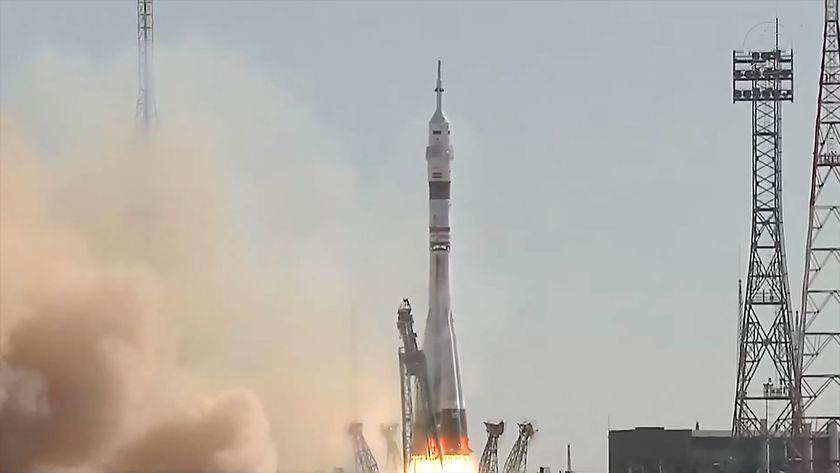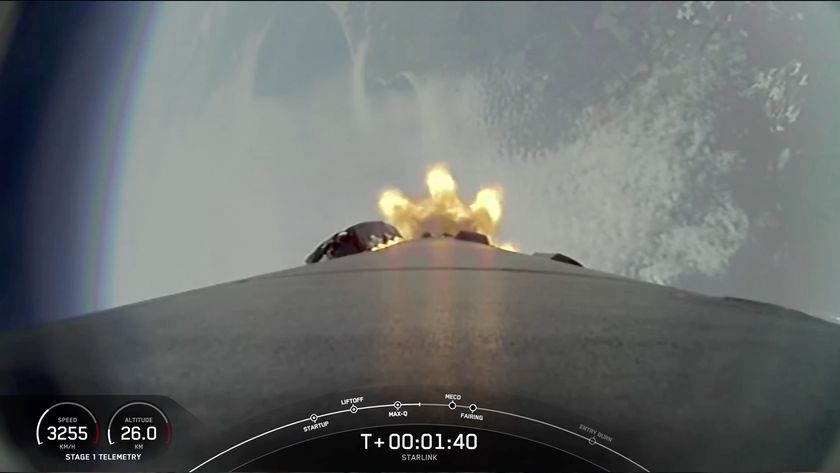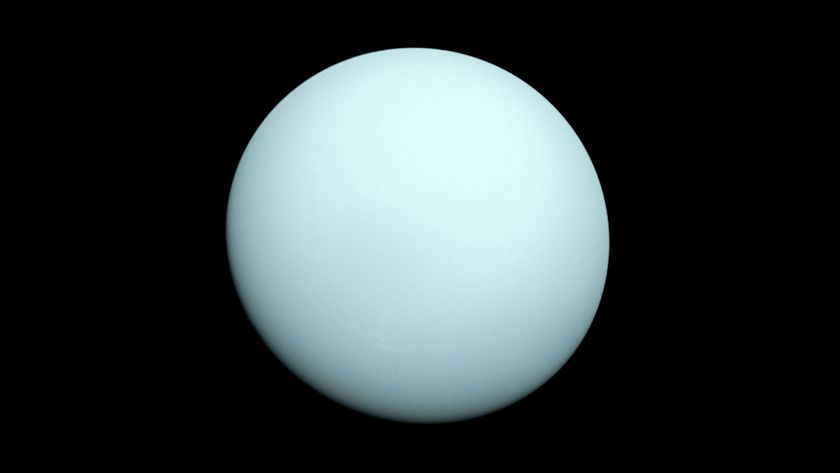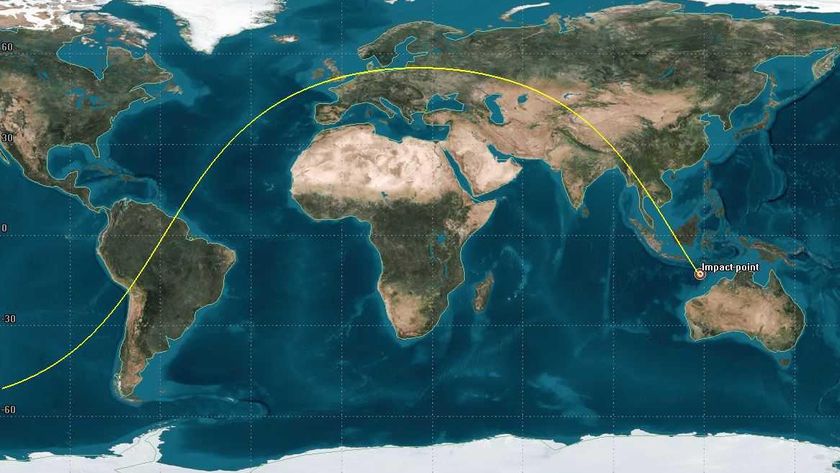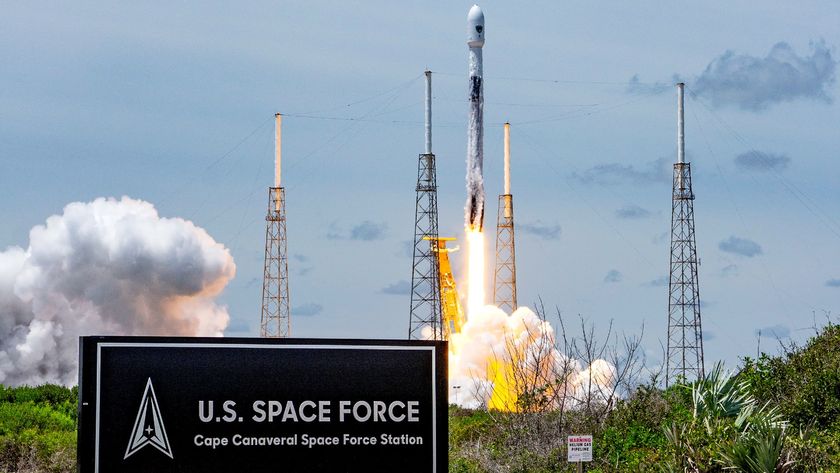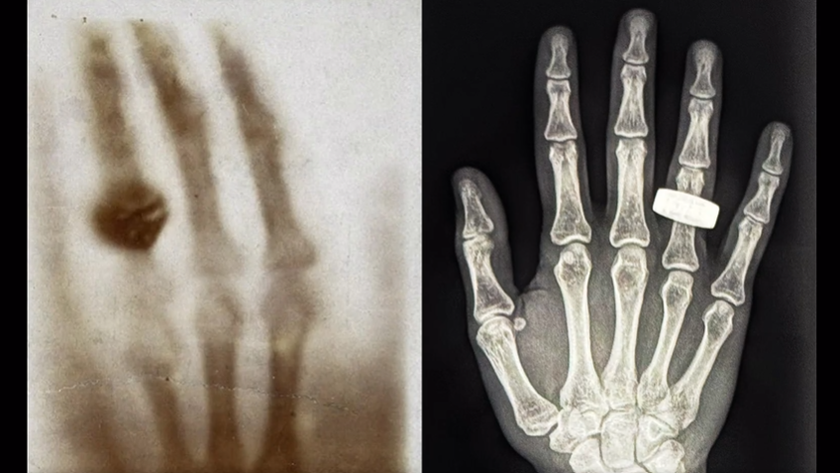Hubble: The Telescope That Almost Never Flew
It's easy today to take the Hubble Space Telescope and itsglorious views of galaxies and colorful nebulae for granted after 15 years ofamazing astronomy and countless cosmic photographs.?
But just after World War II, when astronomy via a"spaceship" got its first concrete proposal, putting telescopes and camerasin space to look back in time sounded outlandish.
As astronauts prepare this week to fix andupgrade Hubble one last time, astronomers are reflecting on the nearly halfa century it took to overcome both technological and political hurdles beforeHubble would send its first pretty picture.
In the post-war era, when the idea of a space telescope gotits first serious consideration, not a single spaceship had been launched, sothere was no precedent for launching anything, heavy or light, much less agargantuan telescope with a camera and setup for beaming images back to Earth.
The history of Hubble reveals it was a project that, forseveral reasons, almost never got off the ground.
Long drama
Sputnik, whenlaunched in 1957, weighed just 185 pounds. By contrast, astronomicallypowerful telescopes are quite heavy. The first 200-inch ground-basedobservatory ? the HaleTelescope on Palomar Mountain in California ? had yet to be completed backin the late 1940s. And the Hale ended up weighing about 1 million pounds. Andthat's at the lower end, size-wise, of what was being talked about for space.
Get the Space.com Newsletter
Breaking space news, the latest updates on rocket launches, skywatching events and more!
Decades would pass.
Finally, thanks to astronomer Lyman Spitzer's vision for anorbiting space telescope and work advocating for it, along with the efforts ofan army of engineers, politicians, astronauts and scientists, the first stunningpictures from the Hubble Space Telescope were returned to Earth in 1994.
The hurdles were enormous and nearly unending, but theHubble had to happen, on some level, says science historian Bob Zimmerman.
"The drama of the story is how long it took, but neverthe less, it was inevitable," he told SPACE.com.
Here is Zimmerman's short review of the hold-ups:
"In the 50s, astronomers were reluctant because of the cost.In the 60s, they were reluctant because of the technological aspects. In the 70s,they were on board, but Congress was an issue and the money wasn't available. Inthe 80s, there were more technological issues. In the 90s, it was launched withan incorrectly shaped mirror. It took almost 50 years from Spitzer's firstproposal before the telescope was sharp and clear and ready to take pictures."
A cast of thousands
Spitzer's initial idea, hatched in 1946, was actuallyfeasible, Zimmerman said.
After wrapping up work related to World War II inWashington, D.C., Spitzer headed to Santa Monica, Calif., where he drafted apaper for a project, "Astronomical Advantages of an Extra-TerrestrialObservatory," for the newly formed RAND Project there.
His proposal for a 200- to 600-inch space telescope wasbased on technology that was available at the time (including the German V-2rocket used against the Allies in WWII) or thought to be on the horizon in thecoming decade, Zimmerman wrote in "The Universe in a Mirror: The Saga ofthe Hubble SpaceTelescope and the Visionaries Who Built It" (Princeton UniversityPress, 2008).
No one bit for another 10-plus years, Zimmerman found, basedon interviews he conducted with many key players over the years and his manyhours spent in various library and museum archives.
Eventually, Spitzer's proposal for an optical? telescope inspace came to the attention of Nancy Roman, NASA's first chief astronomer, anda working group of scientists who met to assess NASA's fast-growing science programin 1962. The group was unwilling, though, to accept Spitzer's proposal, becauseit was thought to be premature and faced serious technological hurdles,Zimmerman wrote.
Another working group and a few years later, there wasstrong support for what was then called the Large Space Telescope, with a120-inch diameter mirror, Zimmerman wrote. It helped that Spitzer chaired thegroup, and that the Ranger, Mariner, Gemini and Apollo programs were thengenerating tons of space engineering. At that point, Roman became a heavy NASAadvocate for what became the Hubble Space Telescope, especially moving into the1970s.
"She made it possible to get early telescopes up [intospace] to learn what needed to be learned," Zimmerman said. "As soonas that technology started to mature, she was pushing for the design work. Herhard-nosed nature helped get the telescope built, but worked against herpolitically, eventually hurting her career."
Hubble heroes
Another Hubble hero down the road was energetic astronomerBob O'Dell, who eventually gave up a tenured position at the University ofChicago to be the project scientist for the Large Space Telescope project atNASA's Marshall Space Flight Center in Alabama.
Hubble's history in the 1970s involved a lot of political battlesfor control of the project and a fierce, drawn-out battle to obtain money forit from Congress. As a government employee with NASA, O'Dell was unable todirectly lobby for Hubble, but he dedicated countless hours to organizingimportant astronomers to do that work, Zimmerman wrote.
O'Dell also did clean-up work on a number of others'political missteps with Congress. Those missteps included asking for too muchmoney at first and mentioning a report that had given short shrift to the LargeSpace Telescope.
At one point in 1974, the House Appropriations Committeerecommended zero funding for the telescope. Going against his boss's orders,Zimmerman wrote, O'Dell then organized a successful, extensive lobbyingcampaign by astronomers to undo that.
Key astronomers
One of O'Dell's key soldiers, along with Spitzer, wasastronomer John Bahcall at the Institute for Advanced Study at Princeton. Aperson with endless enthusiasm, Bahcall became a lobbying voice for O'Dell,enduring some of the classic brush-offs and rude treatments that come withdealings with members of Congress.
Budget cuts in the mid-'70s forced O'Dell and other toreduce Hubble's aperture to 94 inches, which could fit inside the cargo bay ofthe space shuttle. The shuttle was in the works, but not yet flying.
In 1975, Noel Hinners, the new NASA administrator, playedthe ultimate political hardball, Zimmerman wrote. The political climate thenwas unenthusiastic about space and NASA, and politicians were under deepsuspicion as a result of the Watergate scandal. So instead of accepting a smallfigure from Congress to get the telescope off the ground, he refused all moneyand deleted the entire telescope budget. This generated a firestorm of protestsand lobbying in 1976 and 1977, with O'Dell still working behind the scenes andBahcall in front of the scenes, leading the troops.
One dramatic highlight: Bahcall arrived five minutes latefor breakfast prior to some key meetings with members of Congress during thattime, Zimmerman wrote. The astronomer explained that had cut his thigh badly ona nail sticking out of his hotel mattress and spent half the previous night inan emergency room. Nonetheless, Bahcall hobbled up and down the long halls ofCongress the rest of that day, in obvious pain, continuing to make the case forHubble.
Another wild lobbying moment that year noted by Zimmerman:Bahcall met with a Congresswoman in the ladies lounge adjacent to the Housefloor so she could dash out for a key vote if necessary.
Success with funding
It worked. By the summer of 1977, a Congressional committeeapproved a budget for the space telescope. Other enormous challenges followedin building the telescope and then in addressing the well-known mirror problemthat cursed the telescope's first pictures in 1990. But all these weresurmounted and are another entire story.
However, the dedication and vision, especially of Spitzer,for whom the SpitzerSpace Telescope was named as a tribute to his contributions to space-basedastronomy, are recognized by many in the field of astronomy and beyond.
In retrospect, Bahcall told SPACE.com in 2004 (a year beforehe died) that he was "enormously proud" of the telescope's success."It exhibits some of the best properties of Americans ? ingenuity, abilityto overcome obstacles, which we faced when the telescope was first launched andhad an imperfect prescription for the lenses. It reveals beautiful things to usabout the way the universe is that we would have otherwise not imagined andthat gives us a source of pride particularly on days when there are things inthe newspapers that are not a source of price for the United States."
Zimmerman agreed.
"The thing that stood out the most was the dedication,the unwavering commitment to push this, the willingness to make sacrifices toget it to happen," Zimmerman said. "Among the people who count areSpitzer, who had the commitment to push for the telescope for decades; Bob O'Dell,who made sacrifices in his career to make it happen; John Bahcall, whosacrificed years of research time to lobby for the telescope; and Nancy Roman,who antagonized a lot of scientists to push for this project."
Regarding the upcomingrepair mission next week, Zimmerman is not counting his chickens beforethey hatch. "This is rocket science," he said. "Anything canhappen. The American track record is superb at trying to do these impossiblethings, but they are impossible things. They take a little longer."
- New Video - Hubble Crew's Rescue Mission Plan
- New Show: Hubble's Universe: The Final Shuttle Service Call
- Image Gallery - Hubble Photos: When Galaxies Collide
Join our Space Forums to keep talking space on the latest missions, night sky and more! And if you have a news tip, correction or comment, let us know at: community@space.com.

Robin Lloyd was a senior editor at Space.com and Live Science from 2007 to 2009. She holds a B.A. degree in sociology from Smith College and a Ph.D. and M.A. degree in sociology from the University of California at Santa Barbara. She is currently a freelance science writer based in New York City and a contributing editor at Scientific American, as well as an adjunct professor at New York University's Science, Health and Environmental Reporting Program.


